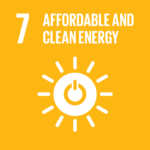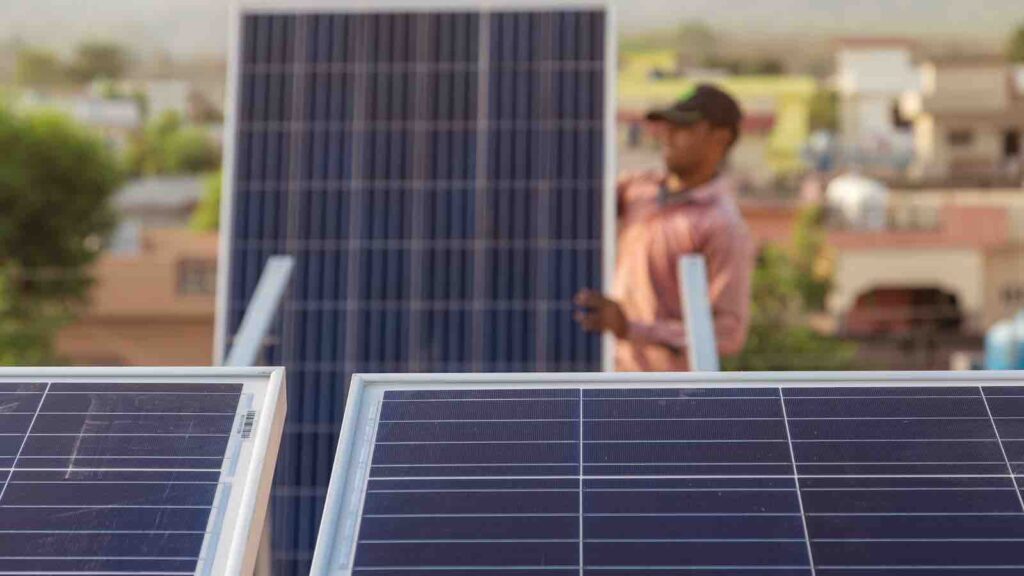The growth in solar energy is already impacting fossil fuel consumption. India’s coal-fired power output experienced annual declines of 4.9% and 5.8% respectively.
India is in the midst of a groundbreaking solar energy revolution, one that is dramatically transforming its energy landscape and placing pressure on fossil fuel consumption. With a population nearing 1.5 billion and a rapidly growing economy, India stands as the world’s third-largest emitter of greenhouse gases. This reality makes the country’s energy choices pivotal in global efforts to limit climate change to manageable levels.
RELEVANT SUSTAINABLE GOALS



The Solar Revolution Unfolds
India’s aggressive shift towards renewable energy isn’t just a local story; it’s a critical chapter in the global fight against climate change. With its massive population and economy, India’s energy decisions carry significant weight on the world stage. A push towards clean energy in India means a substantial reduction in global greenhouse gas emissions, essential for meeting international climate targets.
India’s clean energy transition has seen exponential growth. In 2024 alone, the country is expected to add nearly 20GW of new solar capacity—almost double what was installed last year. As of the end of September, the nation boasts an installed solar capacity of 91GW, a figure that has made solar a crucial player in India’s energy mix. According to the Institute of Energy Economics and Financial Analysis (IEEFA), solar power now makes up more than 7% of India’s electricity output, a leap from less than 3% in 2019.
This rapid expansion has been propelled by several factors, including a surge in state-led clean energy initiatives and the government’s ambitious push to install rooftop solar panels on 10 million homes, slashing household electricity bills and further reducing dependence on fossil fuels.
Fossil Fuels in Decline
The growth in solar energy is already impacting fossil fuel consumption. Data from Reuters shows that in both August and September 2024, India’s coal-fired power output experienced annual declines of 4.9% and 5.8% respectively. This is a significant shift in a country where coal has traditionally been the backbone of electricity generation. Currently, coal’s share in total power capacity stands at 48.1%, according to IEEFA, as the country’s renewable capacity hits 202GW, complemented by 8GW of nuclear power.
India has set an ambitious target to achieve 500GW of low-carbon generating capacity by 2030. The current surge in solar energy and the ongoing push towards wind, hydro, and other renewables put India on a promising path. But there are hurdles ahead. While the government aims for a greener future, coal continues to play a substantial role in the energy mix. The Centre for Research on Energy and Clean Air (CREA) and the Global Energy Monitor recently cautioned that India’s continued approval of new coal projects could lead to more stranded assets in the future as the demand for clean energy surges.
Looking Ahead: Clean Energy, Cleaner Economy
India’s bold strides in solar energy signal a promising shift in its energy narrative. However, achieving long-term success hinges on the country’s ability to manage its transition away from coal effectively. The ongoing investments in solar and wind, coupled with policy measures promoting rooftop solar, are making a clear case for a cleaner and more resilient energy future.
The coming years will be a defining period not just for India, but for the world. With solar energy leading the charge, India’s journey towards a sustainable energy future could serve as an inspiring blueprint for other nations grappling with their own transitions to cleaner power.
Lead image courtesy of Greenaperture from Getty Images Pro (Solar panel installation)
You may also be interested in :
Rapid Adoption Of Clean Technologies Lowers Energy Costs, Says IEA Report


